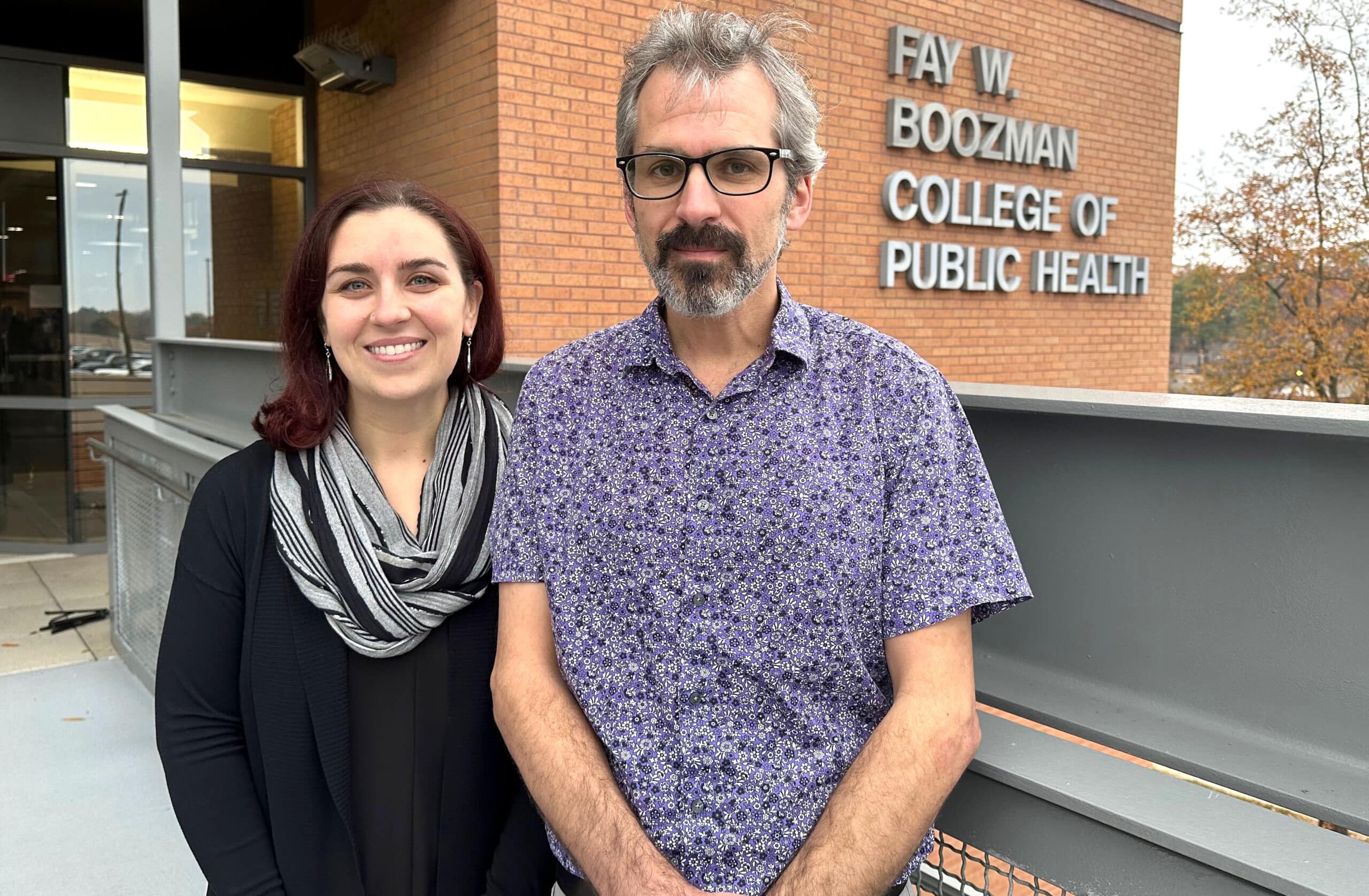UAMS Researchers to Develop, Test PTSD Treatments for Incarcerated Individuals with Opioid Use Disorder
| LITTLE ROCK — A research team from the University of Arkansas for Medical Sciences (UAMS) will develop and test new approaches to post-traumatic stress disorder (PTSD) screening and treatment among incarcerated individuals who are eligible for opioid use disorder (OUD) services.
The study, “Developing and Testing Innovative Care Pathways for Screening and Treatment of OUD/PTSD in Jails,” will be the first trial to test an integrated model of screening and treatment for PTSD and opioid use disorder. The trial will take place in the Pulaski County Regional Detention Facility, the largest jail in the state of Arkansas. The first phase of the research will engage community partners, including detention facility staff, in designing an appropriate, integrated treatment model to be tested during a second phase of the research.
Leading the project are Melissa Zielinski, Ph.D., associate professor and clinical psychologist in the UAMS Department of Psychiatry and Behavioral Sciences, and Nick Zaller, Ph.D., professor in the UAMS Fay W. Boozman College of Public Health’s Department of Health Behavior and Health Education.
The National Institute of Health (NIH) is providing $915,000 for the first phase of the multiphase study, which began in September and will continue through August 2025. The study, which is part of the NIH’s HEAL Initiative, is exclusive to Pulaski County. It is a collaborative effort between UAMS, the Pulaski County Regional Detention Facility and Central Arkansas community members.
“The project provides an unprecedented opportunity to bring evidenced-based treatments for PTSD and OUD to a setting where people very often lack access despite there being a great need,” Zielinski stated.
Opioid use disorder occurs when the use of opioids causes significant impairment and distress to a person’s life and is common among people who become incarcerated. PTSD, which is a mental health condition that can result from exposure to trauma and results in symptoms like reexperiencing the event through flashbacks and nightmares, is also common for incarcerated individuals. Past research has shown that the two disorders often co-occur, but there is limited research on how to effectively identify and treat them in jails.
“Overdose is the leading cause of death among people recently released from incarceration,” Zielinski said. “Our goal with this study is to find ways to avoid that outcome.”
Among the primary goals of the study is to develop collaborative research between academia and community members to create and test solutions that differ from what is currently the norm.
“That’s how we’ll ultimately develop what’s tested in the trial in regard to screening and treatment services,” Zielinski said. “The opportunity to co-develop ideas with the community is exciting and necessary.”
Zaller noted that community-engaged research embodies the all-hands-on-deck approach that is needed to address behavioral health issues among individuals experiencing incarceration.
“Partnering with community members creates a holistic effort for support and treatment,” he said. “We need to avoid silos in our public health approaches. People coming together to solve public health problems will result in more meaningful and sustainable solutions.”
“Anyone with a substance use disorder is likely to encounter law enforcement,” he added. “Without treatment, people are at much greater risk of continued involvement in the criminal justice system. Therefore, if we can develop better, more integrated behavioral health care systems for individuals who are experiencing incarceration that could have broader implications throughout our state and region.”
Research reported in this publication was supported by the National Institute on Drug Abuse of the National Institutes of Health under Award Number R61DA059947. The content is solely the responsibility of the authors and does not necessarily represent the official views of the National Institutes of Health.
UAMS is the state’s only health sciences university, with colleges of Medicine, Nursing, Pharmacy, Health Professions and Public Health; a graduate school; a hospital; a main campus in Little Rock; a Northwest Arkansas regional campus in Fayetteville; a statewide network of regional campuses; and eight institutes: the Winthrop P. Rockefeller Cancer Institute, Jackson T. Stephens Spine & Neurosciences Institute, Harvey & Bernice Jones Eye Institute, Psychiatric Research Institute, Donald W. Reynolds Institute on Aging, Translational Research Institute, Institute for Digital Health & Innovation and the Institute for Community Health Innovation. UAMS includes UAMS Health, a statewide health system that encompasses all of UAMS’ clinical enterprise. UAMS is the only adult Level 1 trauma center in the state. UAMS has 3,275 students, 890 medical residents and fellows, and five dental residents. It is the state’s largest public employer with more than 12,000 employees, including 1,200 physicians who provide care to patients at UAMS, its regional campuses, Arkansas Children’s, the VA Medical Center and Baptist Health. Visit www.uams.edu or uamshealth.com. Find us on Facebook, X (formerly Twitter), YouTube or Instagram.###
